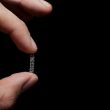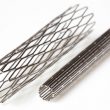The incidence of left ventricular thrombosis (LVT) after anterior ST-segment elevation myocardial infarction (STEMI) ranges from 4% to 26%. This is associated with bad long-term evolution. In the past, triple-scheme therapy (vitamin K antagonist plus dual antiplatelet therapy) was recommended to prevent LVT, despite the lack of high-quality scientific evidence and an increase in the...
OCT in STEMI Patients: Is It Safe to Prevent Stenting?
Percutaneous coronary intervention in patients with acute myocardial infarction (AMI) where the physiopathological mechanism is plaque erosion or non-atherosclerotic mechanisms (such as spontaneous coronary artery dissection) is not beneficial according to recent studies. The EROSION study (Effective Anti-Thrombotic Therapy Without Stenting: Intravascular Optical Coherence Tomography–Based Management in Plaque Erosion) has shown medical treatment with no...
Is iFR Reliable After 5 Years? Analyzing the iFR-SWEDEHEART at 5 Years
Fractional flow reserve (FFR) proved to be very useful and safe in the FAME study, but its trade-off was using adenosine (which has a short half-life) and adverse reactions, which fortunately were rare. Subsequently, two large studies—the iFR-SWEDEHEART and DEFINE-FLAIR—demonstrated that instantaneous wave-free ratio (iFR) offered comparable results to FFR in the short term, avoiding...
ACC 2022 | FLAVOUR Study: FFR and IVUS in Intermediate Coronary Lesions
FLAVOUR was a prospective randomized non-inferiority study in patients with intermediate coronary lesions (40%-70%) that compared two imaging modalities: IVUS (intravascular imaging) and FFR (fractional flow reserve). According to this research—presented at ACC 2022—, FFR-guided angioplasty was non-inferior to IVUS-guided angioplasty at 2 years of follow-up. Furthermore, using FFR-based imaging led to fewer stent implantations....
ACC 2022 | COMPLETE
Percutaneous coronary intervention improves angina related quality of life in AMI patients with multivessel disease. The COMPLETE study has shown patients receiving complete revascularization compared against culprit-only revascularization presented lower cardiovascular rate or AMI at 3-year followup. ACC featured a COMPLETE subanalysis assessing angina related quality of life. It included 4041 patients, mean age 62,...
ACC 2022 | PACMAN AMI
Atherosclerosis plaque causing AMI is often large in volume, high in lipids and have a thin fibrous cap. Statins often reduce atherosclerosis progress, but the impact of PCSK 9 inhibitors (alirocumab) after acute coronary syndrome is scarcely known. The aim of this study was to determine the effect of alirocumab using intracoronary imaging (IVUS, OCT,...
Are There Differences Between Women and Men After a Percutaneous Intervention?
Prior research has shown that women with coronary artery disease who undergo percutaneous revascularization present more comorbidities, require less aggressive treatments, have greater long-term morbidity rates and worst functional status and/or post-procedure angina. This study used data from the CPORT-E trial (Cardiovascular Patient Outcomes Research Team Non primary Percutaneous Coronary Intervention) to assess baseline differences...
STEMI: Can We Omit Stenting?
The recommended treatment for ST elevation acute myocardial infarction (STEMI) is early PCI, typically stenting. However, stent implantation always involves the risk of intravascular complications, such as stent thrombosis or restenosis. Sometimes stable flow is restored to the target vessel after initial PCI and we can omit stenting when there is no angiographically significant residual...
Wire Jailing at Side Branch to Prevent Occlusion After Main Vessel Stenting: Should It Be the Standard of Care?
While the ideal treatment for coronary bifurcation is provisional stenting, this can be associated with side branch occlusion, which leads to severe adverse events. To prevent this complication, several treatments have been proposed. One of them is wire jailing at side branch before stent implantation in the main vessel. However, the actual benefit of this...
Drug Eluting Stents: Does Strut Size Matter?
The benefit of first-generation Drug-Eluting Stents (DES) over Bare Metal Stents (BMS) is largely known. Moreover, technological developments have led to reduced strut size, biodegradable polymers, and new scaffolds, which in turn have led to improved outcomes. These are known as ultrathin stents, and its struts measure between 70 and 100 microns, which contributes to...







